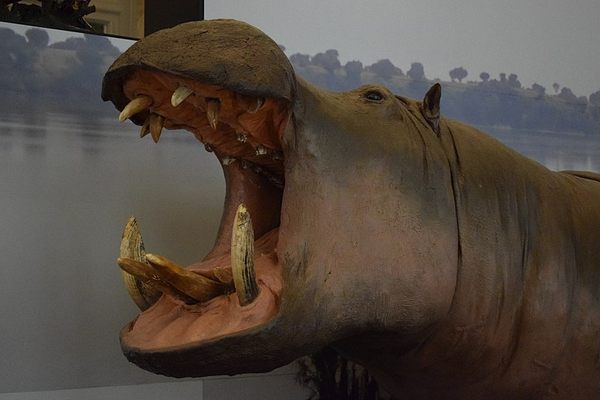About
While there are a number of famous wartime animals stuffed up and displayed around the American expanse, possibly one of the most famous is Little Sorrel, Jonathan "Stonewall" Jackson's Civil War nag whose hollowed out skin has been filled up and put on display just yards from the rest of his remains.
Originally named "Fancy," the horse began his military career on the Union side. But in 1861, he and a number of other Union horses landed in Confederate hands when Southern forces at Harper’s Ferry overtook their transport train.
The Confederate general bought two horses, one for himself and the other for his wife. He named them "Big Sorrel" and "Little Sorrel." But Jackson soon decided, in a Homer-buys-Marge-a-bowling-ball-esque move, that he would keep the smaller beast for himself. The animal was no great prize, known for being skinnier and smaller than the average horse. However size and beauty do not always matter—Jackson appreciated his horse for its remarkable endurance and supposed intelligence. He rode Little Sorrel for the duration of the war, right up until he was fatally shot whilst astride the nag.
After Jackson's death, Little Sorrel was paraded around for a bit under the care of Mrs. Jackson, enjoying his fame as much as a horse can reasonably be expected to enjoy human adoration. Eventually he was moved to the campus of the Virginia Military Institute where he grazed until he passed away in 1886 at the ripe age of 36 in human years.
The late Sorrel's body was given to a taxidermist who worked partially for money and partially for an agreed amount of the famous horse's bones, which he eventually gave to a museum in Pittsburgh. Little Sorrel's hide was stuffed and mounted in a simulacrum of life which can still be seen on display in the VMI Museum. However the story does not end there.
Much later in 1997, a group of Daughters of the Confederacy, aghast at the thought of a Confederate animal's bones being so far from its heroic (if, by this point a bit tatty) skin, successfully lobbied to have the bones returned to VMI, where they could be spiritually reunited with their former flesh blanket. In honor of the horse's service and legacy, they burnt Little Sorrel's reclaimed skeleton to ashes and buried the remains in front of the "Stonewall" Jackson statue near the parade grounds.
Related Tags
Community Contributors
Added By
Published
November 11, 2014
Sources
- http://www.roadsideamerica.com/story/3611
- http://vaudc.org/sorrell.html
- http://www.vmi.edu/archives.aspx?id=3761
- http://www.washingtontimes.com/news/2006/apr/7/20060407-090610-9730r/?page=all
- http://connecticuthistory.org/little-sorrel-connecticuts-confederate-war-horse/
- https://www.vmi.edu/museums-and-archives/vmi-museum/stonewall-jackson-at-vmi/





















